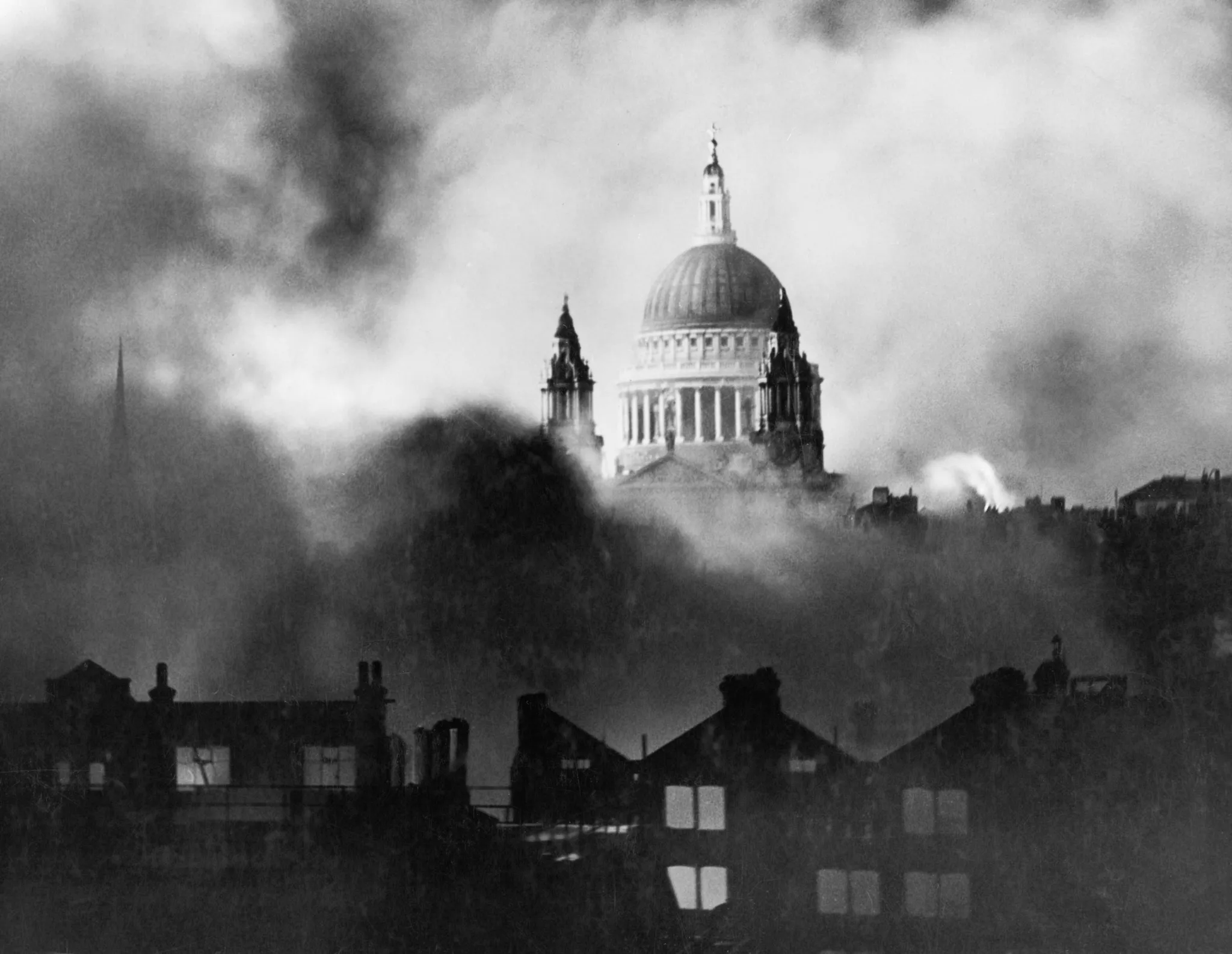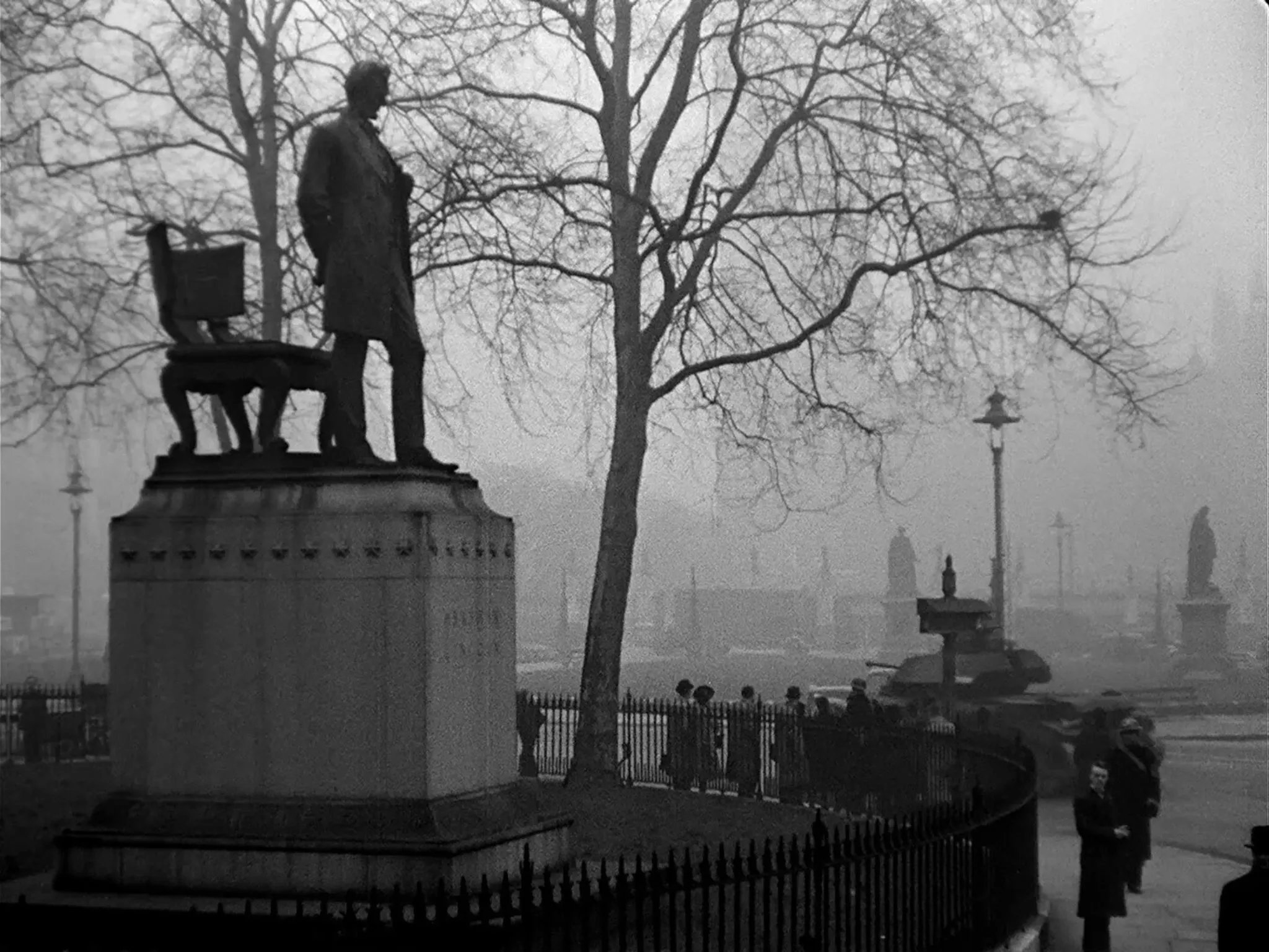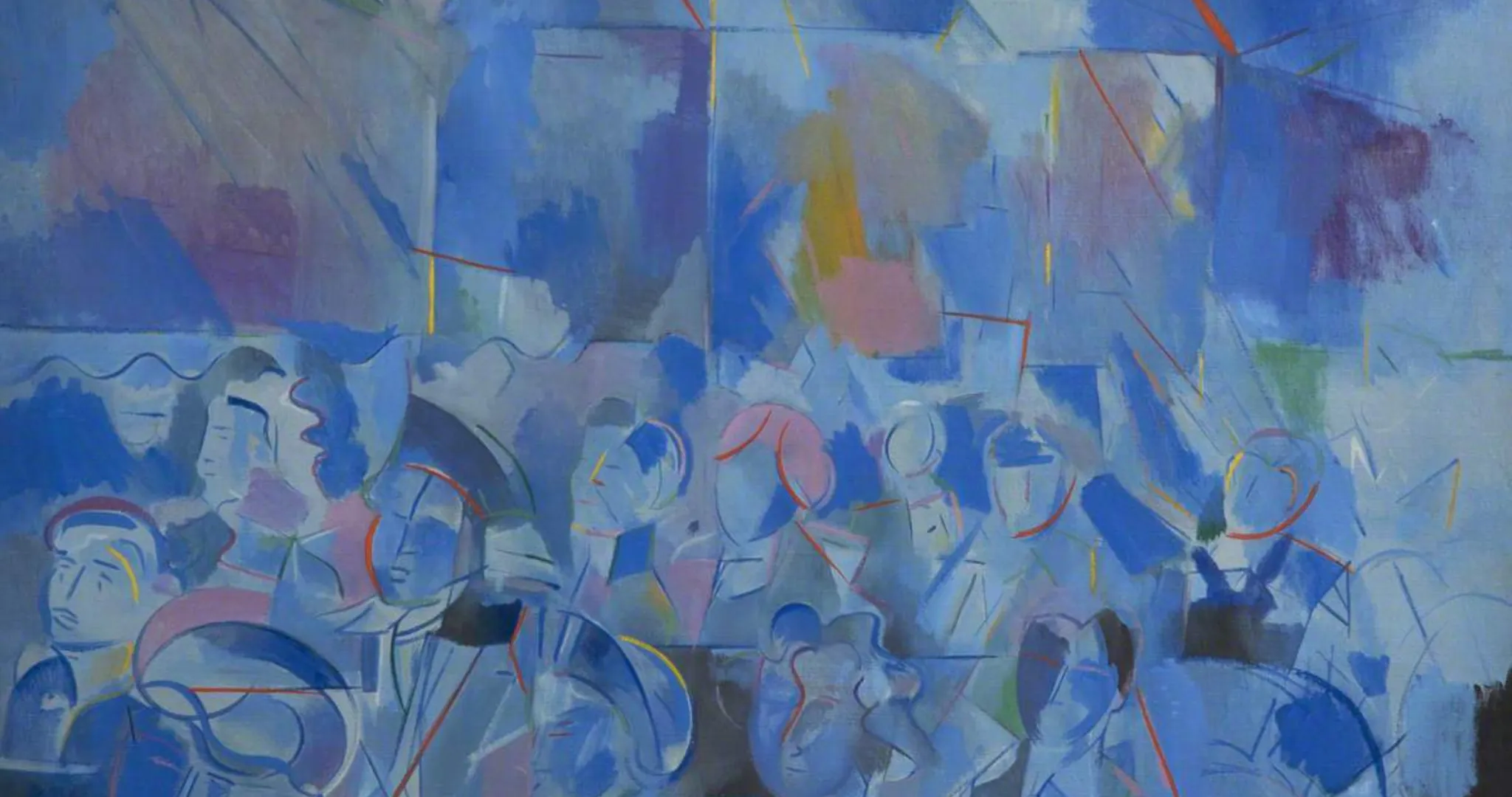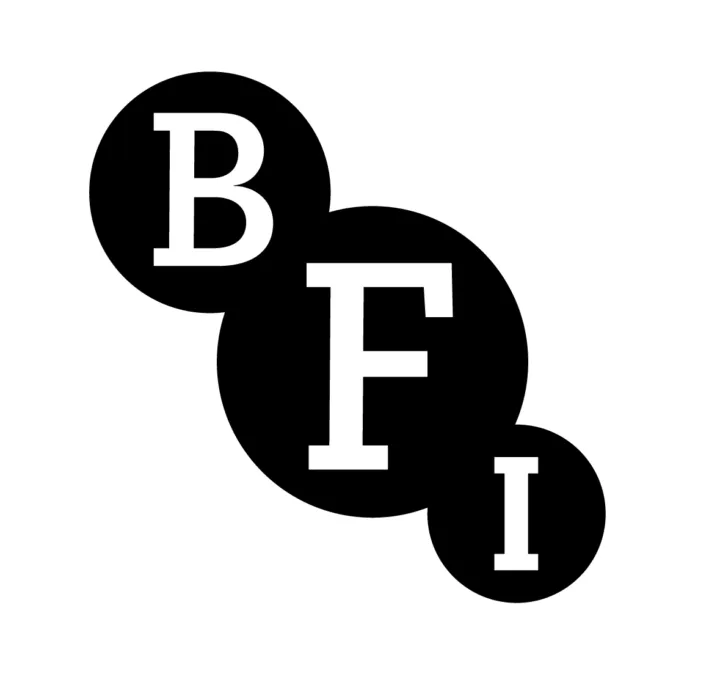Please update your browser
Your current browser version is outdated. We recommend updating to the latest version for an improved and secure browsing experience.
- Humphrey Jennings
- United Kingdom
- Documentary
Humphrey Jennings brought a singular perspective to British cinema. A widely-read, Cambridge-educated poet as well as a painter, Jennings was a committed surrealist and co-organized the International Surrealist Exhibition in London in 1936. The next year, he co-founded Mass-Observation, a movement of artists and social scientists that attempted to capture and communicate the experiences and feelings of everyday people across the different strata of British society through the collection of anecdotal details reported by participants. Bolton, nicknamed "Worktown" was the initial focus and the organization conducted field studies for the Ministry of Information once the Second World War began.
These different aspects of Jennings' work came together in two different, but related projects: an unfinished assembly of materials designed to provide a holistic portrait of industrialization (Pandaemonium 1660-1886: The Coming of the Machine as Seen by Contemporary Observers, 1937-1985 [1]) and rich montage films like Words for Battle and Listen to Britain (1942).


“His subjects were thus, at least on the surface, the common ones; yet his manner of expression was always individual, and became more and more so. It was a style that bore the closest possible relationship to his theme, to that aspect of his subjects which his particular vision caused him consistently to stress. It was, that is to say, a poetic style. In fact it might reasonably be contended that Humphrey Jennings is the only real poet the British cinema has yet produced.”
Lindsay Anderson, "Only Connect:" (Sight and Sound, April-May 1954)The Documentary War
In 1934, German dancer-turned-filmmaker Leni Riefenstahl shot the most monumental, well-funded, and elaborately choreographed documentary propaganda film ever made. Adolf Hitler's architect Albert Speer had designed elaborate Nazi Party Rally Grounds on the outskirts of Nuremberg, effectively transforming one of the emblematic cities of the German Renaissance into a giant set for Riefenstahl, who worked with a crew of well over 100 and 30 cameras to create Triumph of the Will (1935).
The film begins with the Olympian descent of Hitler from the skies above to the historic center of Nuremberg. An opening intertitle makes it clear that his intention is to "review his faithful followers," and Riefenstahl dramatically cross-cuts the vantage points of many different "subjects," directing them all towards the central figure of Hitler. Later, the process is repeated at much greater scale at the Zeppelinfield of the Party Rally Grounds, shooting both from below the stage and from a distance to reinforce the domineering presence of Hitler with a spectacle of mass adulation. Here truly is the most vivid possible example of the "aestheticization of politics" decried by Walter Benjamin at the same moment [2].
With war imminent, American filmmaker Frank Capra watched Triumph of the Will for the first time and came away shaken and despondent. "I felt we were going to lose to these guys," he said decades later. Struggling to find a way to communicate the urgency and meaning of the Second World War to a skeptical American public, Capra decided to produce counter-propaganda by taking found footage from existing newsreels and documentaries, re-editing them to produce new contrasting montage effects, and adding comforting, sometimes humorous, narration in an "everyman" idiom. The result was a series of seven films called Why We Fight, completed between 1942 and 1945. Prelude to War, the first part of the series, makes use of Riefenstahl's footage and was seen throughout the United States at the urging of President Roosevelt. Capra's depiction of the Battle of London from Episode 4, with narration by Walter Huston, is below.
[2] Walter Benjamin, "The Work of Art in the Age of Mechanical Reproduction" (1935)






Creating a Usable Past
Triumph of the Will was an equally salient reference point for Jennings, who had begun making documentaries for the General Post Office Film Unit under John Grierson in the mid-1930s. Words for Battle even begins with a similar sequence from the air. However, rather than emphasizing the trajectory of an all-unifying central figure (as Riefenstahl does), Jennings transitions to a 16th century map of Britain and a series of interrelated visual motifs that will course back and forth across the film. The blossoms and branches that immediately follow the map are echoed both in the grasses of the landscape two shots later and by the plants that enframe the cuts of marching soldiers near the end of the film. Flying birds in the second shot after the map resonate with the images of flight that began the film and anticipate the aerial combat that, as in Capra's Why We Fight, is rightly presented as the key to the Battle of Britain. "Never was so much owed by so many to so few," Winston Churchill famously said in a speech delivered around the time much of the film was shot in August 1940, and Jennings characteristically emphasizes the particular individuality of each of these few Royal Air Force pilots.
Jennings had initially considered making a matching film that would have ironically juxtaposed readings of representative texts of German Classicism and Romanticism with footage of contemporary Nazi Germany (in the manner of Capra's Why We Fight). The point is made more subtly and profoundly through the elegant integration of pieces by Beethoven, Mozart, and the German-born Handel in Words for Battle and the prominence accorded in Listen to Britain to a public performance of Mozart by pianist Myra Hess in London's National Gallery. This, both films insist, is the common heritage of humanity and not the exclusive property of those trying to co-opt it.
More patriotically, Jennings attempts to reactivate the British literary tradition by opening up new connections with contemporary events. In this way, the "eagles" of John Milton's Areopagitica (1644) are linked to the RAF pilots while, more surprisingly, William Blake's "Jerusalem" is associated with evacuating children a few moments later. "Jerusalem" was originally the preface to one of Blake's epics, Milton: A Poem (1808), and one of the implicit arguments of Words for Battle is that all of these quotations are part of an ongoing cultural dialogue that connects the many different people engaged in a collective effort to defend it (the effect is strengthened by Laurence Olivier's masterfully modulated delivery).
Jennings has sometimes been criticized for what might at first seem overly literal pairings, but none of these connections can or should be seen in complete autonomy and the goal is always to use the montage of text and image to open up a series of overlapping poetic associations. Rhetorical eloquence is linked to this composite portraiture of a society making the best of a desperate situation. Endurance is rhetorically stressed in several of the poems and it is also manifested spatially through the series of lasting vertical elements that unite the different sections of the film - from the cliffs in the opening section to Westminster Abbey in the Milton section to St. Paul's Cathedral standing even after direct attack in the Rudyard Kipling section to the statue of Abraham Lincoln that brings the readings to a close.






Churchill, Lincoln, and the Special Relationship
The focus on the statue of Abraham Lincoln in the final section of Words for Battle creates yet another contrast with Triumph of the Will. In the opening sequence of Riefenstahl's film, historic 16th century statues are shown in the round and from approximately the point-of-view of Hitler's moving car, as if to suggest that the German Renaissance has been revived by his presence. By contrast, Jennings presents a montage of different vantage points of the statue as Olivier reads out a passage from the "Gettysburg Address" (1863). He concludes with an image of people coming and going, with other statues visible in the background, suggesting instead that each of the people of London has his or her own relationship with these statues and what they represent.
The history and sincerity of the "special relationship" between the United Kingdom and the United States is a subject of ongoing debate [3]. Churchill first used the phrase in 1944, but Jennings recognizes the centrality of the idea already in Words for Battle. In transitioning from Churchill's "Darkest Hour" speech, with its call for the New World to come to the rescue of the Old, to the "Gettysburg Address," he gives it potent cinematic expression.

Rediscovering Cinema
Words for Battle does not end with a quote or a reading, but with something altogether more surprising, a forty-second montage of interlinked horizontal movements that are elegantly synchronized with part of Handel's Water Music (1717). Handel's music was commissioned by King George I and intended to accompany a royal boating excursion along the river Thames. In the final section of his film, Jennings passes both the grandeur of Handel and the accumulated rhetorical force of all the recited texts on to the many individual men and women united in common purpose.
The length of this montage is virtually identical to the length of one of the films of Louis and Auguste Lumière, and the final shot includes a spontaneous glance at the camera that evokes the startled reactions of some of the passengers in the mythic "first film," The Arrival of the Train at La Ciotat Station (1895-1897). At this moment of greatest possible national crisis, less than fifty years after the Lumières shocked the world with their projection machine, the unique possibilities of cinema were being rediscovered and reinvented.




